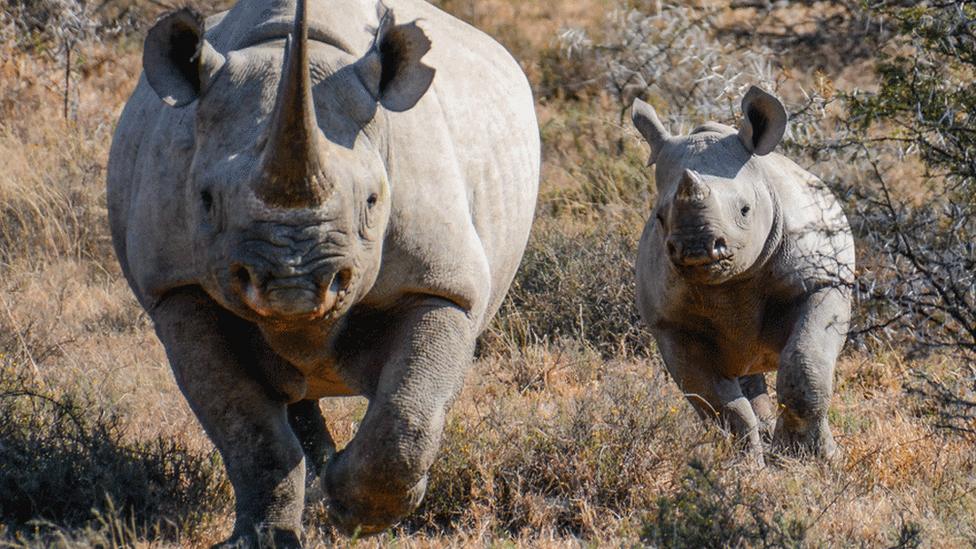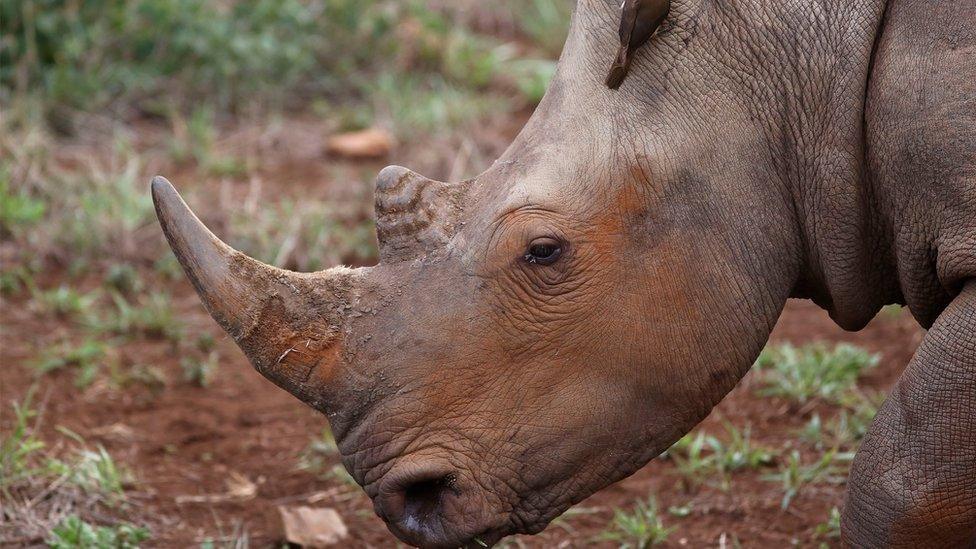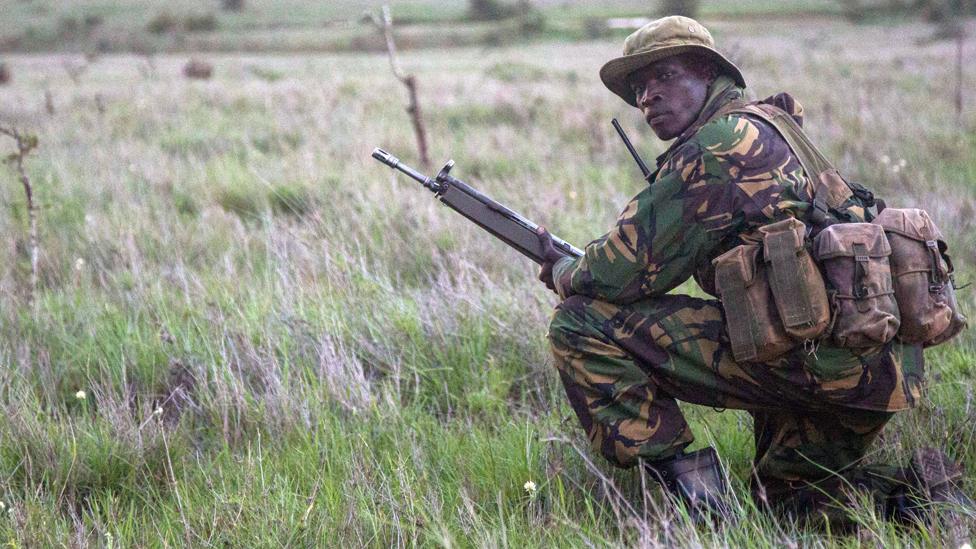Connected tech aims to protect rhinos from poaching
- Published

Rhinos could be extinct by 2025, according to some estimates
New technology to combat rhino poaching is being trialled in South Africa.
In a tie-up between South African technology firm Dimension Data and networking giant Cisco, the technology will track vehicles and people entering the reserve rather than animals.
There are only about 25,000 rhinos left in the wild, with the majority in South Africa.
It is estimated that about 1,000 are killed each year, primarily for their horn.
The firms have set up a local area network and wi-fi hotspots around the private, unnamed reserve, which is adjacent to the Kruger national park.
The next stage will be to link CCTV and infra-red cameras with thermal imaging, drones and vehicle tracking sensors to the network.
Tracking sensors are placed on vehicles and people are informed about the tracking when they enter the reserve. Car registrations are also checked at the gate against a national database of stolen cars and personal IDs are scrutinised.
The plan is to replicate it in other reserves, not just to protect rhinos but other endangered species including elephants, lions and tigers.
Microchips
Drones have been used before to help conservation efforts and last year British scientists from the University of St Andrews showed off a system dubbed Protect Rapid (real-time anti-poaching intelligence device) that combined a satellite collar with a heart-rate monitor and video cameras that are embedded in rhinos' horns.
The heart-rate monitor triggers the alarm and rangers are immediately dispatched.
There are other schemes to place microchips under the skin of the animals.
One of the key advantages of the new system is that it is non-invasive, said Dimension Data executive Bruce Watson.
"We don't touch the animals by darting them with tranquilisers to insert sensors into their horns, or insert a chip under their skin. This can be extremely stressful and risky for the animal and we've seen a number of rhinos either dying, or going blind, and having to be euthanised."
Dr Paul Glover-Kapfer, the World Wildlife Fund's technology adviser, told the BBC that technology was "an increasing factor" in WWF's global work.
"The system outlined by Cisco and Data Dimensions, whilst not a panacea, is a welcome addition on this front."
But he questioned how applicable it would be "outside of well-funded protected areas".
"To be truly transformative, technology needs to be accessible, both in terms of its technical complexity and affordability.
"Connectivity in particular is a huge challenge facing many conservation organisations, and WWF is working with technology leaders to design systems for real-time data transfer to and from the remote areas within which we work."
- Published21 January 2016

- Published7 February 2016

- Published9 March 2016
